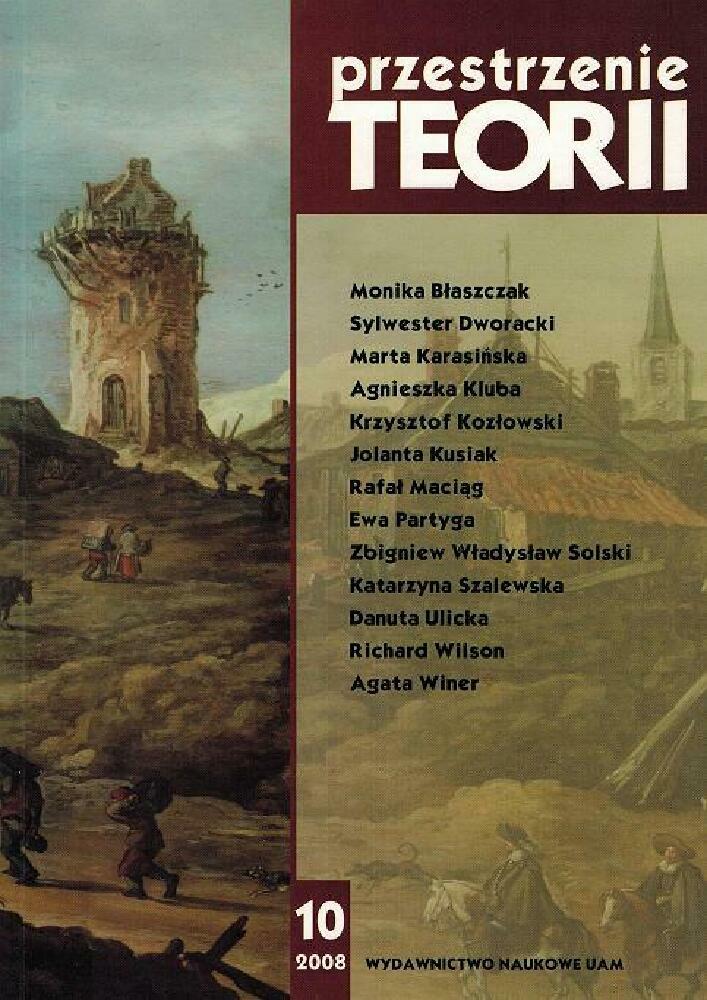Abstrakt
In the article Old Polish satires and menippean structures. An attempt at a typology of the genre the author took up the subject of the possibility of existence of this kind of satire derived from the antique tradition. Thus, what needed to be more precisely explained was the incoherent theoretical classification of ancient menippean satires and their influence on the later texts. An attempt at ordering the hitherto statements on the subject by scholars (among other M. Bakhtin, N. Frye, D. Shanzer, H. Rikonnen, K. Korus, R. Piętka and J. Styka) was enriched with a not well known German studies, especially Stefan Trappen's important book. The outline of the background of antique tradition of the genre allowed a wider view at the 17th and 18th century texts (old Polish texts) amongst which menippean satires can be found. On the grounds of native history of literature a division appeared to be indispensable into texts which either formally or actually belong to this genre, thus to the menippean structures and satires. The form of prosimetrum which characterises, among other things, Cadka Hrycia z Fortuną [Hryd's chat with Fortune] by J.S. Herburt or Something New... by Ł. Opaliński does not necessarily become the only constitutive genological feature of mennipea. Tracking the presence of the menippean satire in old literature ended with the observation of 4 important works: Żona wyćwiczona [A Well-trained Wife], Złote jarzmo małżeńskie [The Golden Yoke of Marriage], Corzka wolność młodzieńska [The Bitter Freedom of Youth] and Małpa-człowiek w cnotach, obyczajach i kroju [The Monkey in virtues, customs and clothes]. The suggested inter-genre division into satires and structures allows to see the ties which join Polish literature with European traditions, and at the same time takes into account their distinctness. The standard example of this is a form of a manippean letter (among others, often found in I. Krasicki's works), noted as an aftermath of menippea. The article fits within the current of philological studies on the menippean satire, which has been undertaken only recently.
Licencja
Autorzy
Autorzy tekstów przyjętych do publikacji w czasopiśmie „Przestrzeniach Teorii” są zobowiązani do wypełnienia, podpisania i odesłania na adres redakcji umowy o udzielenie nieodpłatnej licencji do utworów, z zobowiązaniem do udzielania sublicencji CC.
Zgodnie z umową, autorzy tekstów opublikowanych w czasopiśmie „Przestrzeniach Teorii” udzielają Uniwersytetowi im. Adama Mickiewicza w Poznaniu niewyłącznej i nieodpłatnej licencji oraz zezwalą na użycie sublicencji Creative Commons Attribution-NonCommercial-NoDerivatives 4.0 International (CC BY-NC-ND 4.0).
Autorzy zachowują prawa do dalszego, swobodnego rozporządzania utworem.
Autorzy, którzy wykorzystują w swoim tekście cudze utwory (np. ilustracje, fotografie) proszeni są o dostarczenie do redakcji czasopisma zgodę na publikację od uprawnionych podmiotów.
Użytkownicy
Zainteresowani użytkownicy internetu uprawnieni są do korzystania z utworów opublikowanych po 2015 roku „Przestrzeniach Teorii” tylko w calach niekomercyjnych, pod następującymi warunkami:
- uznanie autorstwa - obowiązek podania wraz z rozpowszechnionym utworem, informacji, o autorstwie, tytule, źródle (odnośniki do oryginalnego utworu, DOI) oraz samej licencji;
- bez tworzenia utworów zależnych - utwór musi być zachowany w oryginalnej postaci, nie można bez zgody twórcy rozpowszechniać np. tłumaczeń, opracowań.
Do wszystkich tekstów opublikowanych przed 2015 r. prawa autorskie są zastrzeżone.
Inne
Uniwersytet im. Adama Mickiewicza w Poznaniu zachowuje prawo do czasopisma jako całości (układ, forma graficzna, tytuł, projekt okładki, logo itp.).
